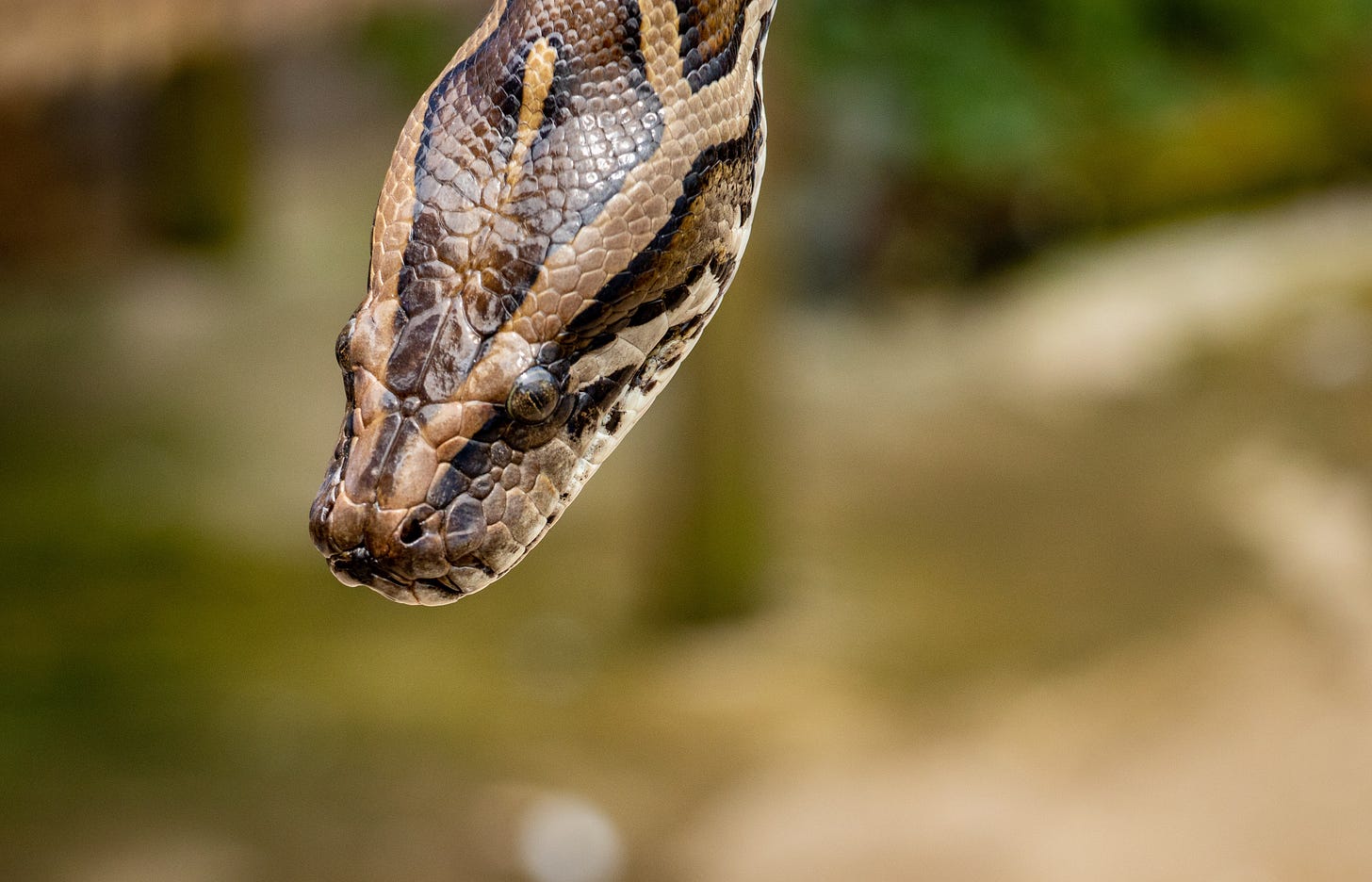Welcome to Thursday Things! If you enjoy this edition, please click the heart icon in the heading or at the end of the post to let me know. You can also post a comment by clicking the dialog bubble next to the heart.
Probably all a simulation. Photo by Graham Holtshausen on Unsplash
Are we living in a simulation? One egghead gives even odds that we are. Columbia Professor: There’s a 50% Chance We’re Living in a Simulation
In an influential 2003 paper, University of Oxford philosopher Nick Bostrom laid out the possibility that our reality is a computer simulation dreamed up by a highly advanced civilization. In the paper, he argued that at least one of three propositions must be true:
Civilizations usually go extinct before developing the capability of creating reality simulations.
Advanced civilizations usually have no interest in creating reality simulations.
We’re almost certainly living inside a computer simulation.
Now, Columbia University astronomer David Kipping took a hard look at these propositions, also known as Bostrom’s “trilemma,” and argued that there’s essentially a 50-50 chance that we are indeed living in a simulation, Scientific American reports.
I just hope no one trips over the power cord and accidentally unplugs us.
Are wisdom teeth disappearing? It certainly seems that wisdom is. Human anatomy is evolving at fastest rate for centuries as wisdom teeth vanish and people grow new arteries
Australian scientists say the human race is now experiencing a "microevolution" where changes happen over a shorter period of time.
Lead author of the study, Dr Teghan Lucas, said: "A lot of people thought humans have stopped evolving.
"But our study shows we are still evolving - faster than at any point in the past 250 years."
The Australian team found an artery in the forearm, that used to disappear after birth, has become increasingly prevalent since the 19th century. …
Other examples of human anatomy changing over time include the increasing absence of wisdom teeth.
Dr Lucas said: "As our faces are getting alot shorter there is not as much room for teeth because of smaller jaws.
"This is happening in time as we have learnt to use fire and process foods more. Alot of people are just being born without wisdom teeth."
When Did Americans Lose Their British Accents? I think it was late in the afternoon of July 4, 1776. But let’s see what the article says:
After industrialization and the Civil War and well into the 20th century, political and economic power largely passed from the port cities and cotton regions to the manufacturing hubs of the Mid Atlantic and Midwest — New York, Philadelphia, Pittsburgh, Cleveland, Chicago, Detroit, etc. The British elite had much less cultural and linguistic influence in these places, which were mostly populated by the Scots-Irish and other settlers from Northern Britain, and rhotic English was still spoken there. As industrialists in these cities became the self-made economic and political elites of the Industrial Era, Received Pronunciation lost its status and fizzled out in the U.S. The prevalent accent in the Rust Belt, though, got dubbed General American and spread across the states just as RP had in Britain.
Will pythons eat us all? Pythons are a bigger problem than I realized. Hunters capture longest Burmese python ever caught in Florida
Two Florida python hunters caught the longest Burmese python ever captured in Florida. The female measured 18.9 feet, beating the state’s previous record for length of 18.8 feet.
That’s a lot of python!
Ausburn and Pavlidis said they are paid snake hunters working for the South Florida Water Management District and the Florida Fish and Wildlife Conservation Commission, which manage Florida’s python elimination programs.
The invasive snakes are among the biggest threats to the fragile Everglades ecosystem, devouring mammals and bird eggs and disrupting the natural balance of predator and prey. Scientists don’t know exactly how many live in the marshes and tree islands, but some estimates point to between 100,000 and 300,000 snakes.
That is a lot of pythons!
Will hybrid super-pigs kill us all? America's Rapid Feral Hog Problem Is Creating a 'Super-Pig' Uprising
In 30 years, feral pigs have expanded from 17 states to 39, reaching a population high enough to constitute a “feral swine bomb,” researchers say.
The Atlantic has more on this porcine menace: The Clock Is Ticking on America’s ‘Feral Swine Bomb’ Wild pigs are running rampant—and doing billions of dollars of damage each year.
Most wild pigs are a mixture of domestic breeds and European wild boar. “The problem with the hybrids is you get all of the massive benefits of all of that genetics,” Brook says. “It creates what we’d call super-pigs.” Domestic pigs have been bred to be fertile year-round and have big litters—now averaging more than 10 in each—and also to grow large. (Farmers limit their diets in captivity, but they fatten up when they graze at will in the wild.) Boars, meanwhile, have heavy fur and other attributes that help them brave the winter months. Wild or domestic, the species is highly intelligent, with a keen sense of smell.
Texas has the worst problem with about 1.5 million rampaging super-pigs. Florida, Georgia, and California are also listed as states with huge pig populations.
On the plus side, maybe the feral super-pigs will eat the Burmese pythons. Or the other way around. Either way, we still have to deal with whichever one wins. At the very least SyFy should get a B-movie out of the showdown.
“You gonna eat that?” Photo by Tomáš Malík on Unsplash
Thank you for reading Thursday Things! Again, please click the hearts, comment, and use the share feature to send this issue to a friend who might enjoy it. See you next Thursday!




